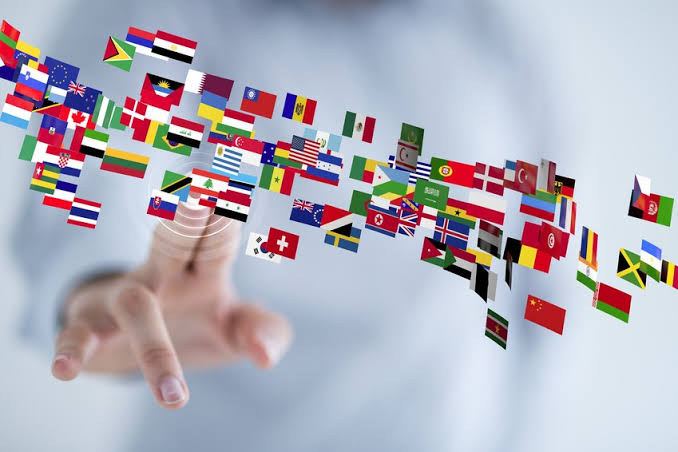Today, learning a language has changed a lot because of new technology. Tools like mobile apps, AI platforms, virtual reality classes, and speech recognition help people learn languages in new ways. By July 2025, these tools are smarter, easier to use, and more available, helping learners study when and how they want. Technology makes learning more convenient and personal, and it removes limits like where you are, when you learn, and how much it costs.
The Rise of Mobile Language Learning Apps
One of the most significant developments in language learning is the proliferation of mobile applications. Platforms such as Duolingo, Babbel, and Memrise continue to dominate the space, but newer AI-powered apps like LingoBot, FluentMe, and ChatTalkAI are gaining popularity in 2025. These tools offer bite-sized lessons, gamified content, and instant feedback, making language acquisition both engaging and efficient. Users can practice vocabulary, grammar, pronunciation, and even hold simulated conversations right from their smartphones. The ease of access and on-the-go learning appeals to both casual learners and professionals.
Artificial Intelligence and Personalized Learning
Artificial Intelligence has revolutionized the personalization of language learning. Modern platforms now use AI to analyze a user’s learning habits, track progress, and adapt lesson plans accordingly. For instance, if a learner struggles with verb conjugation in Spanish, the system increases exposure to those patterns until mastery is achieved. Some applications even incorporate voice recognition to fine-tune pronunciation and speech rhythm. In 2025, the integration of machine learning ensures that no two learners follow the exact same path, making the journey highly individualized and results-driven.
Virtual and Augmented Reality in Immersive Learning
Another major shift in language education involves the integration of Virtual Reality (VR) and Augmented Reality (AR). These technologies provide immersive environments that simulate real-world conversations and cultural settings. VR platforms like ImmerseMe and LinguaScape now allow users to practice ordering food in a French café or asking for directions in a Tokyo subway, all within a 3D setting. This experiential learning helps in contextual understanding and boosts retention. In July 2025, many schools and language institutes have incorporated AR glasses and VR headsets as part of their formal curriculum.
Online Tutors and Global Language Exchange
Technology has also facilitated easy access to native speakers and professional tutors through virtual classrooms and language exchange networks. Websites like italki, Preply, and Verbling connect learners with certified teachers across the globe. Meanwhile, platforms like HelloTalk and Tandem match users for mutual language exchange based on interests and fluency levels. This interaction allows for real-time correction, cultural exchange, and enhanced conversational skills. The global classroom is now only a click away, bringing authentic language practice to anyone with a stable internet connection.
The Role of Speech Recognition and Natural Language Processing
Speech recognition and Natural Language Processing (NLP) have become essential components of modern language learning. Tools like Google’s AI speech coach or Microsoft’s Pronunciation Assistant analyze a learner’s voice to detect errors in tone, inflection, and clarity. These technologies offer immediate feedback and help learners fine-tune their spoken language skills. By July 2025, the accuracy of speech recognition software has improved dramatically, with support for regional accents and colloquialisms, making it more inclusive and practical for real-world usage.
Social Media and Multilingual Content
Social media has played a subtle yet influential role in modern language acquisition. Platforms like YouTube, Instagram, TikTok, and X (formerly Twitter) now host millions of multilingual content creators who teach language through entertaining skits, cultural commentary, and educational reels. Learners get exposed to slang, informal speech, and cultural nuances that traditional textbooks often overlook. Hashtag communities such as #LearnFrench or #SpanishWithMe have become vibrant learning hubs. The constant stream of short, authentic content enables passive learning, which reinforces formal lessons and keeps learners engaged.
Language Learning for Special Needs and Diverse Populations
Technology is also making language education more inclusive. New tools designed with accessibility in mind cater to learners with dyslexia, hearing impairments, or learning disabilities. For instance, platforms now use dyslexia-friendly fonts, captioned videos, and visual learning aids. Text-to-speech tools and gesture-based apps offer alternative methods of communication and instruction. By 2025, adaptive learning platforms have begun offering multi-sensory experiences that accommodate different learning styles, ensuring that language learning is not limited by physical or cognitive challenges.
Challenges and Limitations of Tech-Driven Language Learning
Despite its many advantages, the technological approach to language learning is not without its flaws. Over-reliance on apps can lead to a lack of real-world conversational experience. Automated corrections, while helpful, may lack the nuance that human instructors provide. Additionally, screen fatigue and fragmented attention due to constant app notifications can hinder deep learning. There are also concerns about data privacy, especially with voice-based platforms that collect biometric data. Thus, while technology is a powerful tool, it is most effective when combined with traditional teaching methods and real-world practice.
Future Trends and Innovations
Looking ahead, the future of language learning is likely to become even more interactive and intelligent. Multilingual AI chatbots, powered by GPT-style models, are being developed to simulate nuanced conversations across hundreds of dialects. Blockchain-based credentialing systems are being used to verify language proficiency without formal exams. Meanwhile, wearable devices that track verbal engagement and emotional response are being trialed to enhance feedback mechanisms. By 2030, experts predict that language immersion will become possible through AI-driven simulations that respond dynamically to the learner’s input in real time.
Conclusion
Technology has dramatically altered the landscape of modern language learning, offering flexibility, customization, and immersive experiences that were unimaginable just a decade ago. As of July 2025, learners from all walks of life can benefit from innovative tools that adapt to their pace, style, and goals. However, the most successful outcomes occur when these digital tools are used in balance with human interaction, cultural exposure, and consistent practice. The digital era has not replaced traditional learning—it has elevated it, making language acquisition more engaging, accessible, and effective than ever before.




Interesting